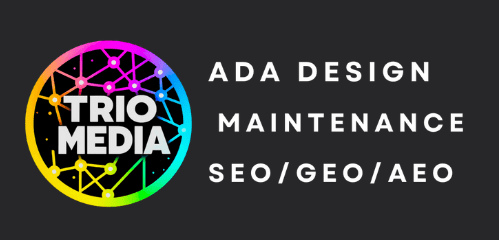Website ADA compliance refers to making a website accessible to people with disabilities, in accordance with the Americans with Disabilities Act (ADA).
In simple terms, an ADA-compliant website is designed so that everyone — including people who use assistive technologies like screen readers, voice navigation, or keyboard-only controls — can access and use it easily.
🔍 The Legal Background
The ADA (Americans with Disabilities Act) is a U.S. civil rights law that prohibits discrimination based on disability. While it was originally written for physical spaces (like buildings and public facilities), courts and the Department of Justice (DOJ) have interpreted it to apply to websites and digital content as well.
Businesses that serve the public — including retail shops, service providers, restaurants, and more — are expected to ensure their websites are accessible.
🧭 The Technical Guidelines
The main standard used to measure ADA compliance is called the Web Content Accessibility Guidelines (WCAG) — currently WCAG 2.2.
These guidelines are organized around four key principles — a website must be:
- Perceivable: Information and interface must be presented in ways users can perceive (e.g., text alternatives for images, captions for videos, readable contrast).
- Operable: All functionality should be accessible via keyboard or other assistive devices (e.g., no mouse required, clear focus states, no time-based traps).
- Understandable: Content should be readable and predictable (e.g., clear navigation, consistent layout, simple language).
- Robust: The website must work well with assistive technologies (like screen readers, text-to-speech, or voice commands).
⚠️ Examples of ADA Compliance Features
- Alt text for images describing their content
- Keyboard navigation (tabbing through links and buttons)
- Proper heading structure (H1, H2, etc.) for screen readers
- Color contrast that meets readability standards
- Captions and transcripts for audio or video content
- Error notifications that can be read by assistive tools
- Skip navigation links for faster accessibility
💼 Why It Matters
- Legal protection: Non-compliant websites can face lawsuits and fines. Thousands of ADA-related web lawsuits are filed every year.
- Inclusion: It ensures users of all abilities can access your business online.
- SEO benefits: Search engines reward well-structured, accessible websites.
- Better usability: Improves the overall user experience for everyone.
Accessibility Overlay Widgets Fail ADA Compliance

Overlay “accessibility solutions” are automated software solutions that claim to “detect and fix” ADA violations. These “solutions” are like bandaids that masks the site with a layer of code but does not address the underlying coding errors itself.
These website overlay widgets lack manual human testing and actual remediation, which means only 30% of ADA violations are detected, leaving 70% of violations exposed. Having these widgets make businesses an easy target for lawsuits.
According to UsableNet’s 2023 Digital Accessibility Lawsuit Report, the number of lawsuits that involved an overlay widget rose by 60%. Accessibility overlay widgets can be seen in the corners or middle of the page provided by companies like Userway, accessiBe, Accesibly, Equalweb, AudioEye, and more.
